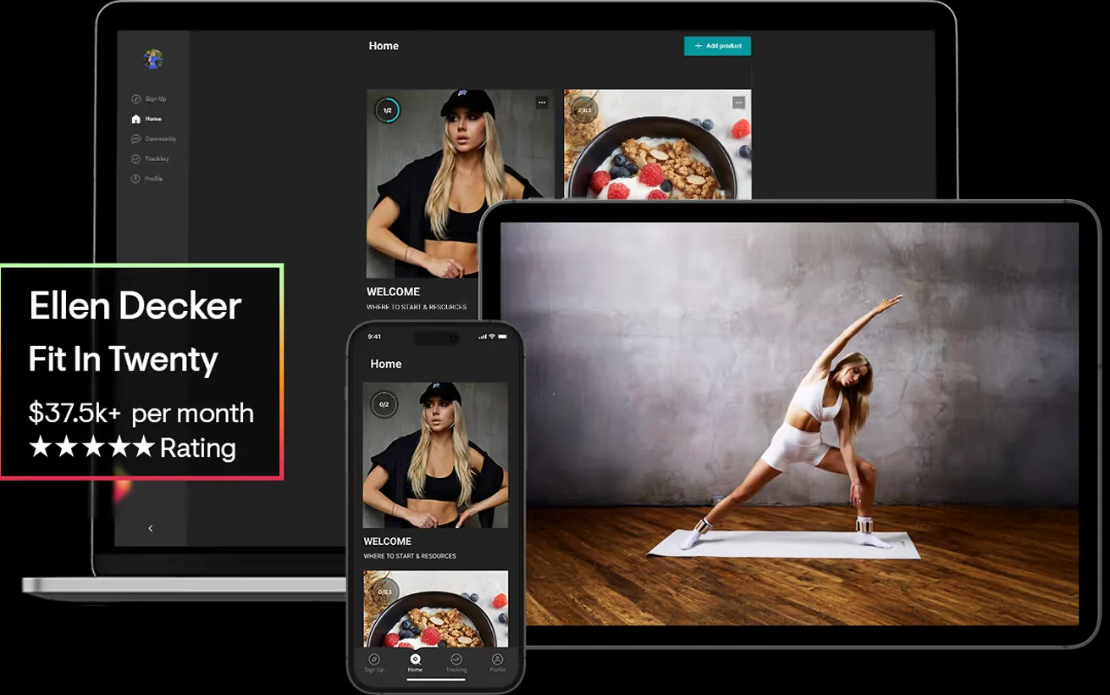
Challenge
Passion.io is a software platform that helps creators, coaches, and trainers build their own custom mobile apps—no tech skills needed. Based in Texas, the company has grown fast, helping thousands of users turn their knowledge into income. But with that fast growth came a challenge: keeping app quality high without overloading their QA team.
As Passion.io grew quickly, manual testing became too much to handle. It took up a lot of time and slowed down development. Every app update needed hours of repeated testing by hand.
Main Problems
- Too many hours spent on manual regression testing
- Testing was slow and often led to mistakes
- Not enough test coverage, putting app quality and customer satisfaction at risk
Passion.io is a software platform that helps creators, coaches, and trainers build their own custom mobile apps—no tech skills needed. Based in Texas, the company has grown fast, helping thousands of users turn their knowledge into income. But with that fast growth came a challenge: keeping app quality high without overloading their QA team.
As Passion.io grew quickly, manual testing became too much to handle. It took up a lot of time and slowed down development. Every app update needed hours of repeated testing by hand.
Main Problems
- Too many hours spent on manual regression testing
- Testing was slow and often led to mistakes
- Not enough test coverage, putting app quality and customer satisfaction at risk
Solution
Our Approach
We started by carefully reviewing how Passion.io was doing manual regression testing. We looked for common problems and things that slowed the process down. Working closely with their Test Lead, we made a clear list of the most important tests to automate. Then we built a strong, flexible test automation system. This included key libraries, a well-defined app structure, and smart reporting tools that sent updates to Slack for quick visibility.
We created tests that worked on both Android and iOS, making sure the experience was smooth across devices. By adding automation to their CI/CD pipeline, tests ran automatically with every new app build. Everyone got instant, easy-to-read test reports.
Custom Features We Delivered
Test Case Automation: We wrote detailed BDD test scenarios so the Test Lead could add more tests later on without needing help.
Advanced Reporting: We linked test results directly to Slack, showing how many tests ran, how many passed or failed, and the pass rate.
Fast Smoke Tests: We added a 5-minute smoke test to quickly check if a build was stable right after deployment—before running deeper tests.
High-Priority Test Automation: We automated over 160 key regression tests (high and medium priority) across Android and iOS, removing the need for manual checks and building trust in test results.
Parallel Test Runs: We set it up so up to 5 tests could run at the same time, speeding things up.
Jira Integration: We connected the system to Jira, so if a test failed, a ticket was made automatically and assigned to the right team member.
Our Approach
We started by carefully reviewing how Passion.io was doing manual regression testing. We looked for common problems and things that slowed the process down. Working closely with their Test Lead, we made a clear list of the most important tests to automate. Then we built a strong, flexible test automation system. This included key libraries, a well-defined app structure, and smart reporting tools that sent updates to Slack for quick visibility.
We created tests that worked on both Android and iOS, making sure the experience was smooth across devices. By adding automation to their CI/CD pipeline, tests ran automatically with every new app build. Everyone got instant, easy-to-read test reports.
Custom Features We Delivered
Test Case Automation: We wrote detailed BDD test scenarios so the Test Lead could add more tests later on without needing help.
Advanced Reporting: We linked test results directly to Slack, showing how many tests ran, how many passed or failed, and the pass rate.
Fast Smoke Tests: We added a 5-minute smoke test to quickly check if a build was stable right after deployment—before running deeper tests.
High-Priority Test Automation: We automated over 160 key regression tests (high and medium priority) across Android and iOS, removing the need for manual checks and building trust in test results.
Parallel Test Runs: We set it up so up to 5 tests could run at the same time, speeding things up.
Jira Integration: We connected the system to Jira, so if a test failed, a ticket was made automatically and assigned to the right team member.
Results
Numbers That Matter
- Automated over 160 important regression tests (80+ for Android and 80+ for iOS)
- Cut down test time by running up to 5 tests at the same time
- Smoke tests now check each new build in under 5 minutes
- Most test runs had over a 95% pass rate, so there was much less need to repeat tests by hand
- Connecting tests to Jira turned issue reporting from hours into seconds, helping the team fix problems much faster
What Changed
- The QA team could now focus on more valuable work instead of repeating the same manual tests
- The product became more stable, and customers were happier thanks to faster, more accurate testing
- We held full knowledge-sharing sessions with the QA team to explain how everything works—how we wrote the tests, how to read results, and how to use the system
- We also gave them a full guide and special tools so they could manage and grow their test system on their own, helping them stay strong and confident long-term
Numbers That Matter
- Automated over 160 important regression tests (80+ for Android and 80+ for iOS)
- Cut down test time by running up to 5 tests at the same time
- Smoke tests now check each new build in under 5 minutes
- Most test runs had over a 95% pass rate, so there was much less need to repeat tests by hand
- Connecting tests to Jira turned issue reporting from hours into seconds, helping the team fix problems much faster
What Changed
- The QA team could now focus on more valuable work instead of repeating the same manual tests
- The product became more stable, and customers were happier thanks to faster, more accurate testing
- We held full knowledge-sharing sessions with the QA team to explain how everything works—how we wrote the tests, how to read results, and how to use the system
- We also gave them a full guide and special tools so they could manage and grow their test system on their own, helping them stay strong and confident long-term
